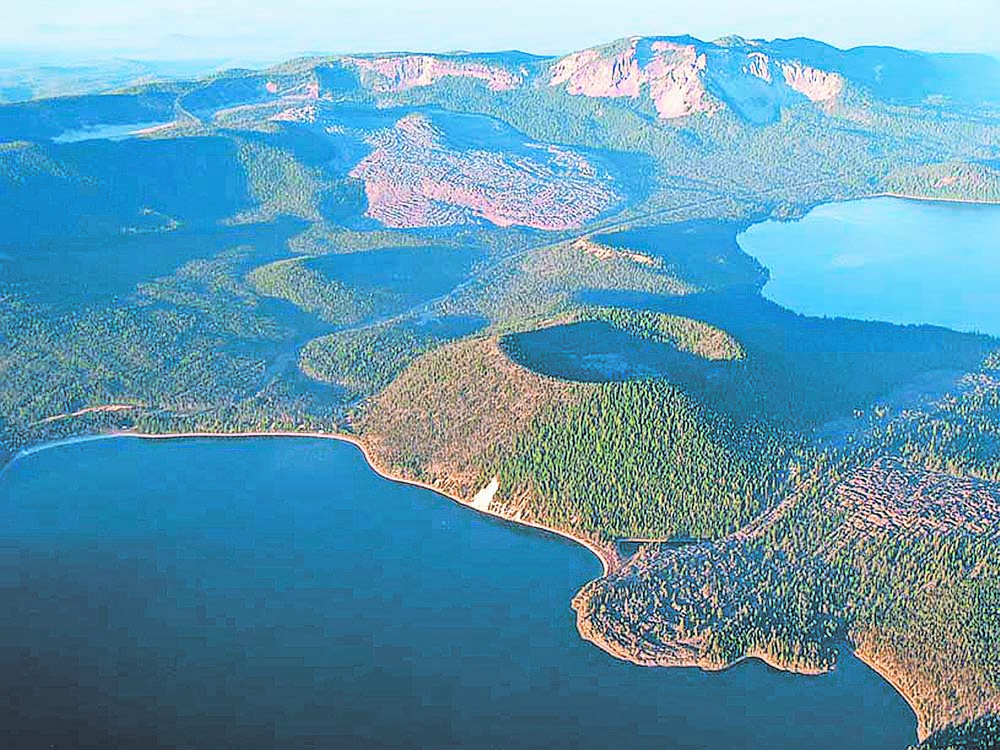New names give Newberry Volcano landscape a sharper identity
Published 12:00 am Monday, July 8, 2019

- FBC
Newberry Volcano, one of the most threatening volcanoes in the United States, has lava flows that cover nearly 1,200 square miles southeast of Bend, an area about the size of Rhode Island.
Across the volcanic landscape are about 400 cinder cones and other geological features that do not have formal names. That makes it difficult to tell the story of the Newberry National Volcanic Monument, said Julie Donnelly-Nolan, a research geologist for the United States Geological Survey.
Donnelly-Nolan has spent the past two decades creating detailed geologic maps of the region, including the Newberry Volcano range. In recent years, she took that further by leading an effort to name features around the volcano.
Her proposal to add 25 names was accepted in September by the Oregon Geographic Names Board. Then they officially approved the new names in June.
“Newberry is the land of many cones and few names,” Donnelly-Nolan wrote in the proposal to the state board. “Some lava flows have multiple names, while some areas with many lava flows have almost no names.”
The names are based on history, shapes, animals, trees, or the process by which the features were created, Donnelly-Nolan said. For example, a 2-mile-long chain of cinder cones is called Camp Abbot Butte since it overlooks the old World War II site near Sunriver. Another feature to the southwest of the volcano is named Dogleg Butte for its resemblance to the shape of a dog’s leg. Skunk Rim got its name from the odor in the area.
“Having names at the identified locations will provide significant benefit to telling the story of the volcano through its 500,000-year history of eruptions, erosion, caldera collapses and glaciation,” Donnelly-Nolan wrote.
Adding the names was a long process for Donnelly-Nolan. She worked with longtime USGS volunteer and retired Deschutes National Forest geologist Bob Jensen to create an initial proposal in 2008. They created a final draft of new names in 2010 but realized they had to revisit their proposal when new mapping technology was released in 2011.
Lidar, the new mapping technology, allowed Donnelly-Nolan to examine rarely seen parts of the Newberry Volcano.
“Many new features became visible, especially in heavily forested and difficult to reach parts of the volcano,” she said.
With the approval of the new names, staffers at the Deschutes National Forest are working to update their map of the Newberry National Volcanic Monument, which was established in November 1990 within the boundaries of the national forest.
Maxine Kline, a cartographic technician with the Deschutes National Forest who serves as an adviser for the state geographic names board, said the updated map with the new names should be available by the fall.
Kline took a trip in September to the Newberry Volcano with Donnelly-Nolan to better understand the work she has been doing to map and identify the various features. Being able to look out over the horizon and identify the features by name made Kline feel more connected to the landscape.
“It’s just so fascinating,” Kline said. “I’ve never been so interested in geology as I am now. You look at this stuff totally differently.”
Kevin Larkin, the Bend-Fort Rock district ranger who oversees the Newberry Volcano, said the Forest Service was directly involved in the naming process and had every opportunity to offer input for the names that Donnelly-Nolan had proposed.
The USGS and Forest Service also consulted with the Klamath Tribes, which have a deep history with the land.
Larkin said the new names will leave a legacy that will help future Forest Service employees and visitors at the volcano.
“We will all have a common understanding of that geographic area,” he said.
In addition, Larkin believes the names could help visitors gain more interest in the Newberry National Volcanic Monument. He credits any new attention to the volcano to the work of Donnelly-Nolan.
“There are very few volcanoes that have been mapped the way this one had,” he said. “I would love for folks to gain more interest in the research Donnelly-Nolan is undertaking.”
— Reporter: 541-617-7820, kspurr@bendbulletin.com






